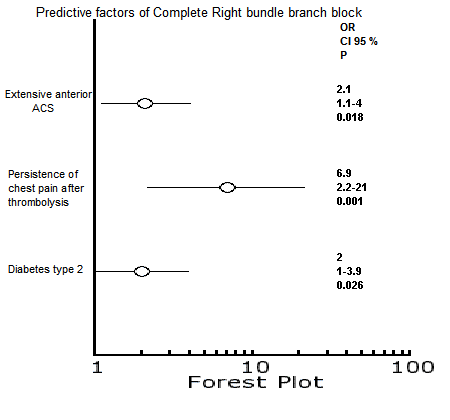Complete Right Bundle Branch Block in Acute Coronary Syndrome with ST Segment Elevation: Epidemiological Features
Clinical Medicine And Health Research Journal,
Vol. 3 No. 5 (2023),
17 October 2023
,
Page 611-617
https://doi.org/10.18535/cmhrj.v3i5.264
Abstract
Background: Complete right bundle branch in acute coronary syndrome with ST segment elevation is common and may predict a poor clinical prognosis.
Its incidence has been the subject of several international studies, as well as, its related mortality, but its epidemiological data is lacking in Algeria.
Aims: The main objective of our study is the determination of the frequency of complete right bundle branch block in acute coronary syndrome with ST segment elevation, the secondary objective was the analysis of its predictive factors and related mortality.
Methods and materials: In this prospective study, conducted in the cardiology department of Hussein Dey hospital (Algiers-Algeria), 467 patients with acute coronary syndrome with elevated ST segment (87 women and 380 men) were enrolled between 28 February 2014 and 16 July 2015. The average age is 60 ± 13 years; at admission, a Holter recorder was attached for continuous ECG monitoring during 48 hours.
Kruskal’s ANNOVA or H tests were used for comparison of quantitative variables, χ2 test or Fisher’s exact test, were used for qualitative variables, all tests were performed with 1st species risk of 5%.
Results: The frequency of complete right bundle brunch block is 10.9 % (51 patients), CI 95%: [8.1%-13.7%], multivariate analysis identified the following independent predictors: anterior acute coronary syndrome, persistence of chest pain after thrombolysis, and diabetes type 2.
The risk of mortality expressed by Hazard Ration (HR) is 3.4, CI95%: [1.07-11.35], p = 0.037; persistence of ST segment elevation after thrombolysis is the only predictive factor of mortality, identified in our study.
Conclusion: Complete right bundle brunch block is frequent in acute coronary syndrome with elevated ST segment, its predictive factors according to our study are: anterior acute coronary syndrome, persistence of chest pain after thrombolysis, and type 2 diabetes.
Its occurrence increases the risk of in-hospital mortality, and the predictor of this latter is the failure of thrombolysis.
- Anterior Acute Coronary Syndrome, Complete right bundle brunch Block, Type 2 Diabetes.

How to Cite
Download Citation
References
- Article Viewed: 0 Total Download


